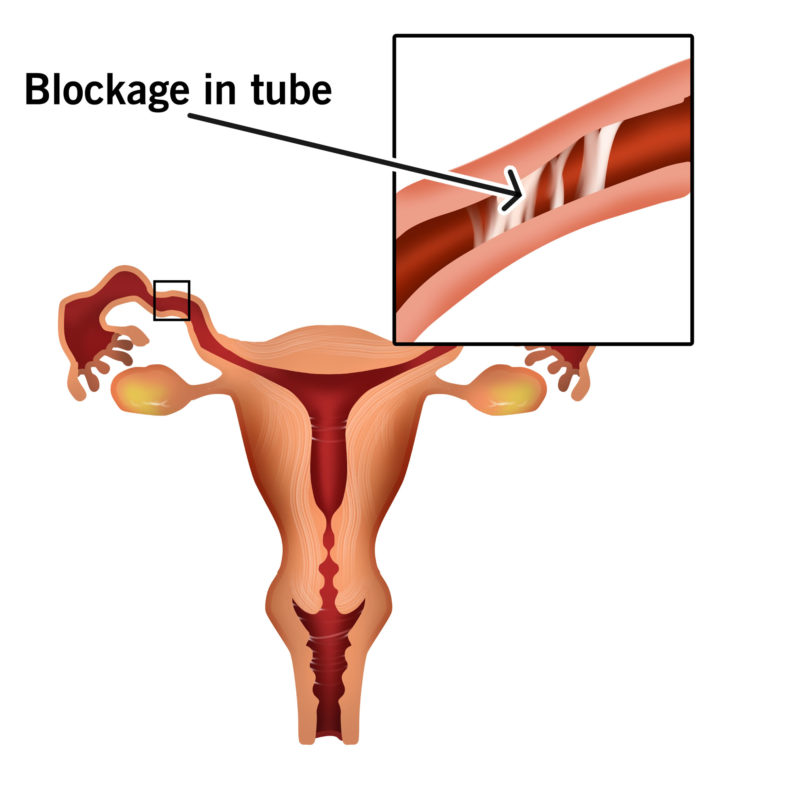Tubal Block
Tubal Block
The fallopian tubes form an important part of female reproductive system. They are two thin tubes, one on each side of the uterus, which help the mature egg move from the ovaries to the uterus. When an obstruction prevents the egg from traveling down the tube, a woman has a blocked fallopian tube, also known as tubal factor infertility. This can occur on one or both sides and is the cause of infertility in up to 30% of infertile women.
Every month during ovulation, an egg is released from one of the ovaries. The egg travels from the ovary, through the tubes, and into the uterus. The sperm also need to swim from the cervix, through the uterus, and through the fallopian tubes to get to the egg. Fertilization usually takes place while the egg is traveling through the tube.
If either of the fallopian tube is blocked the egg cannot reach the uterus and the sperm cannot reach the egg, preventing fertilization and pregnancy. Sometimes tube is partially blocked which can increase the risk of tubal pregnancy or ectopic pregnancy.

What are the symptoms of Tubal Block?
It’s possible that woman may have regular menstrual periods even if there is tubal block. So it is unusual for women with blocked fallopian tubes to have any symptoms. This problem comes into picture when couples trying to get pregnant but unable to do so after one year of trying (or after six months if you are 35 or older). Then doctor will order a specialized X-ray to check your fallopian tubes, along with other basic fertility testing. In this way, infertility is the first symptom of Tubal Block.
Hydrosalpinx is a type of tubal blockage which causes the tube to dilate (increase in diameter) and fill with fluid. The fluid blocks the egg and sperm, preventing fertilization and pregnancy. This may cause lower abdominal pain and unusual vaginal discharge, but not every woman will have these symptoms.
Endometriosis and pelvic inflammatory disease (PID) also cause blocked fallopian tubes, can have symptoms like painful menstruation and painful sexual intercourse.
Symptoms that could indicate pelvic infection include:
- General pelvic pain
- Pain during sexual intercourse
- Foul smelling vaginal discharge
- Fever over 101 (in acute cases)
- Nausea and vomiting (in acute cases)
- Severe lower abdominal or pelvic pain (in acute cases)
Acute pelvic infections can be life-threatening. Do not delay its treatment.
Other potential causes of blocked fallopian tubes include:
- Current or history of an STD infection, specifically chlamydia or gonorrhea
- History of uterine infection caused by an abortion or miscarriage
- History of a ruptured appendix
- History of abdominal surgery
- Previous ectopic pregnancy
- Prior surgery involving the fallopian tubes, including tubal ligation
- Endometriosis
How is Tubal Block diagnosed?
With a specialized x-ray called a hysterosalpingogram, or HSG. An HSG is one of the basic fertility tests ordered for every couple struggling to conceive. The test involves placing a dye through the cervix using a tiny tube. Once the dye is in place, x-rays of the pelvic area are taken.
If all is normal, the dye will go through the uterus and fallopian tubes and spill out around the ovaries and into the pelvic cavity. If the dye doesn’t get through the tubes, then you may have a blocked fallopian tube.
As per the studies, 15% of women have a “false positive,” where the dye doesn’t get past the uterus and into the tube. The blockage appears to be right where the fallopian tube and uterus meet. If this happens, the doctor may repeat the test another time, or order a different test to confirm.
Other tests that may be ordered include ultrasound, exploratory laparoscopic surgery, or hysteroscopy (in which a thin camera is placed through the cervix to look at the uterus). Blood work to check for the presence of chlamydia antibodies (which would imply previous or current infection) may also be ordered.
What is the treatment of Tubal Blockage?
Pregnancy is possible even if one tube is open. In some cases doctor may prescribe fertility drugs to increase the chances of ovulating on the side with the open tube. Below are the treatment options when both the tubes are blocked.
- Laparoscopic Surgery
- In Vitro Fertilization
- Tubal Litigation Reversal

